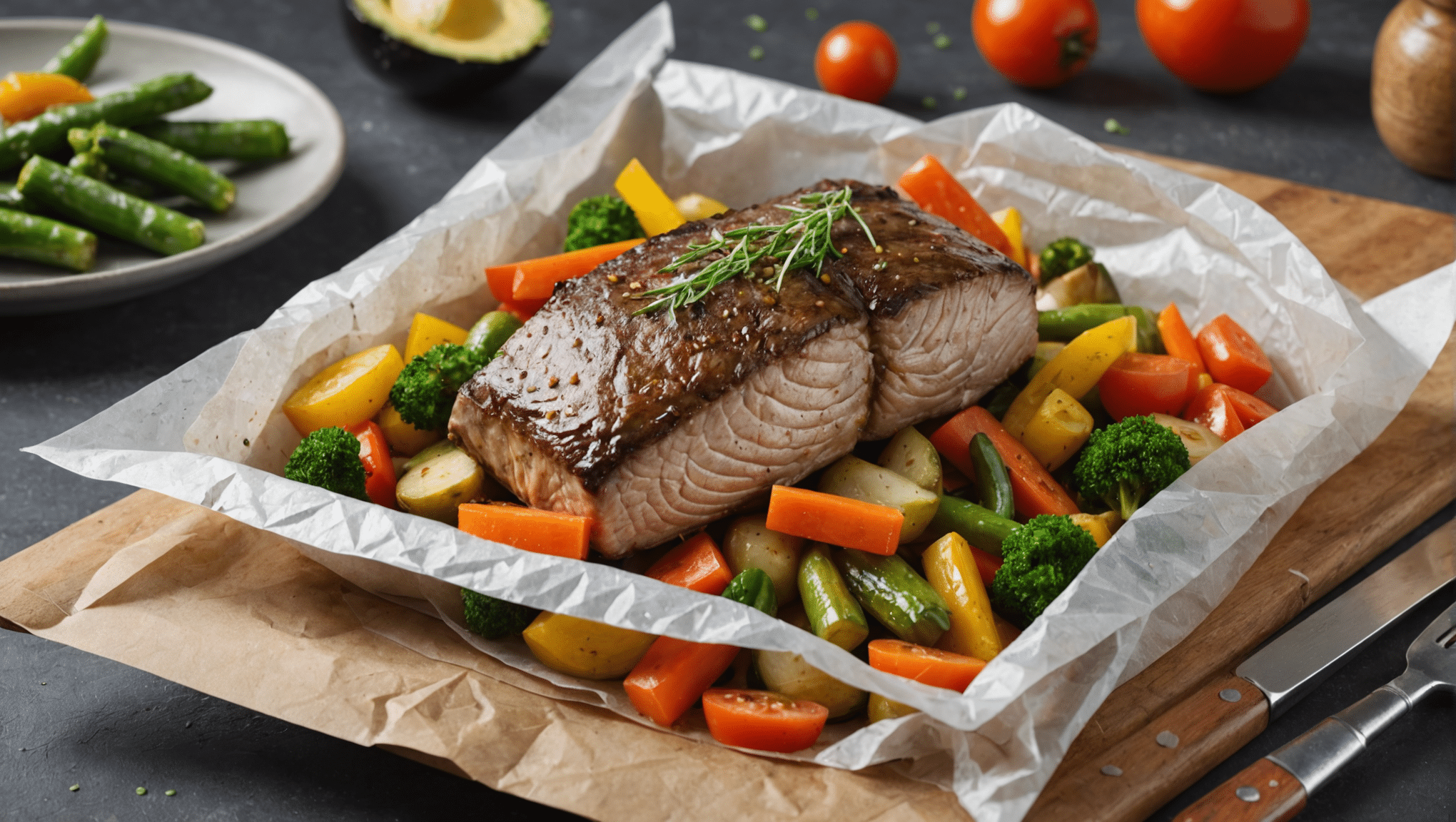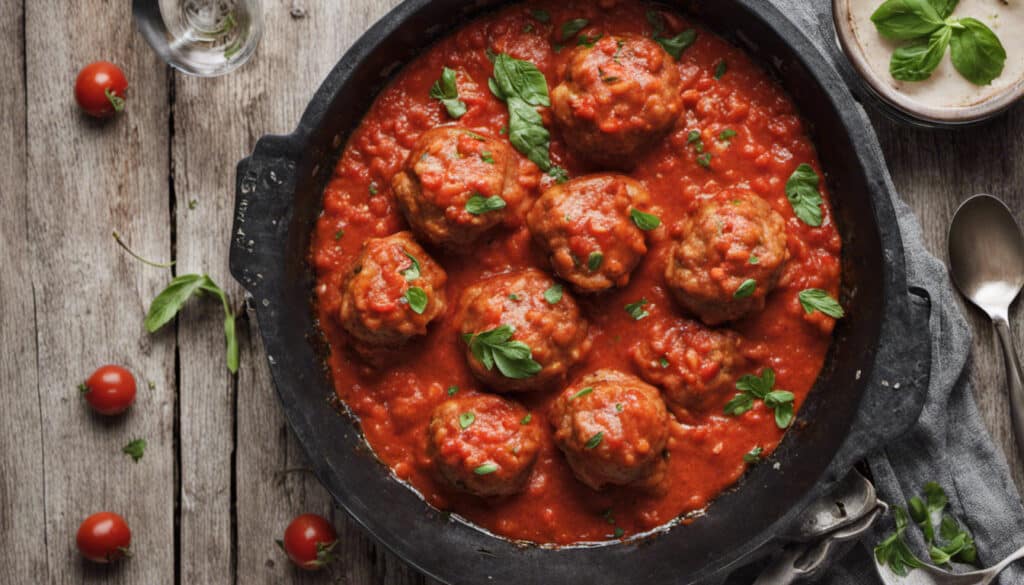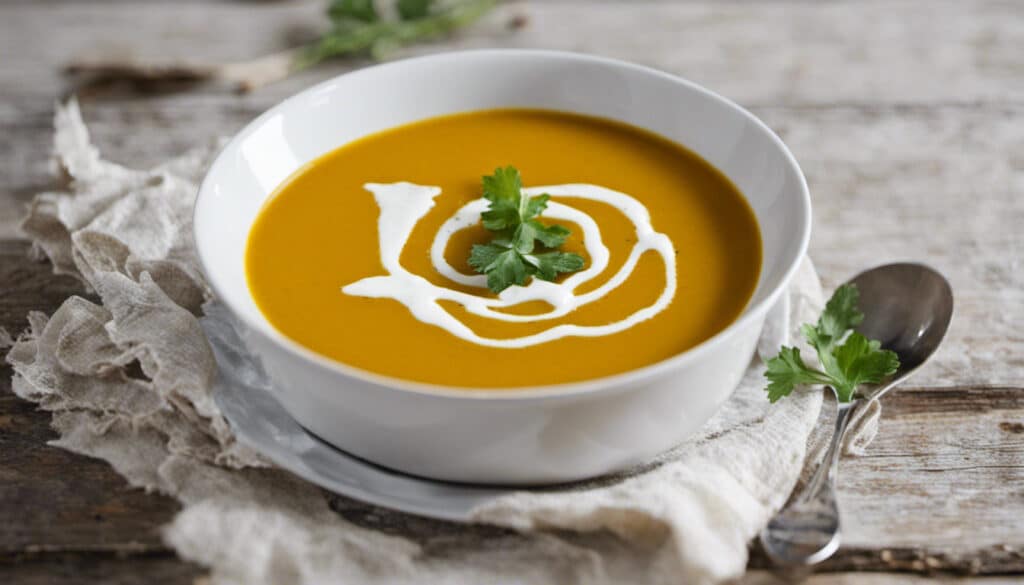| Prep: 20 mins | Cook: 20 mins | Difficulty: Medium | Serves: 6 |
| kcal | fat | saturates | carbs |
| 290 | 19g | 3g | 10g |
| sugars | fibre | protein | salt |
| 5g | 3g | 22g | 1.2g |
Why I Love French Filet de daurade en papillote aux légumes méditerranéens

I have a special place in my heart for the recipe Filet de daurade en papillote aux légumes méditerranéens. There’s something magical about combining fresh, vibrant Mediterranean vegetables with delicate dorade fillets, all wrapped up in a neat parchment-paper package. This dish captures the essence of Mediterranean cuisine, bringing the earthy flavors and fragrant herbs to life in a way that truly delights the senses.
A Meeting of Cultures
Growing up in Texas, my culinary journey began with the rich and bold flavors of Tex-Mex cuisine. As I ventured into other culinary worlds, I found myself drawn to Mediterranean dishes for their simplicity and the way they let fresh ingredients shine. The inspiration for this recipe came during a trip to Provence, where I was fortunate to meet Chef Alain Ducasse. Known for his dedication to local ingredients and traditional techniques, Chef Ducasse’s approach left a lasting impression on me. While this particular recipe, Filet de daurade en papillote aux légumes méditerranéens, doesn’t directly come from his repertoire, his philosophy of letting pristine ingredients star in a dish certainly does.
Why This Recipe Stands Out
One of the beautiful aspects of this dish is the cooking method. Baking the fish and vegetables en papillote—a classic French technique—ensures that all the flavors meld perfectly while keeping the fish moist and tender. The result is a meal that is both elegant and comforting, much like the dishes I create with a modern twist back home.
What I also love about this recipe is its versatility. It’s a dish that feels right at home on a casual weeknight dinner table or as the centerpiece of a more elaborate dinner party. For those looking to complement this dish, you can pair it with a simple green salad or a side of couscous to keep the Mediterranean theme alive. In some ways, it reminds me of the classic Salmon en Papillote, but with a unique twist thanks to the assortment of colorful vegetables and herbs.
Over the years, I’ve found that teaching at grade school has profoundly influenced my cooking. The joy of watching a student’s eyes light up when they grasp a new concept is mirrored when I see someone taste a dish I’ve prepared and fall in love with the flavors. Whether I’m in the classroom or the kitchen, it’s that connection over shared experiences and new discoveries that truly inspires me.
So the next time you’re searching for a recipe that combines simplicity with a touch of sophistication, look no further than Filet de daurade en papillote aux légumes méditerranéens. This dish will not disappoint, leaving you with a memorable meal that’s both delicious and heartwarming.
What You’ll Need
- 6 dorade fillets (6-8 oz each)
- 2 zucchini, thinly sliced
- 2 bell peppers (red and yellow), thinly sliced
- 1 red onion, thinly sliced
- 3 cloves garlic, minced
- 1 pint cherry tomatoes, halved
- 1/4 cup black olives, pitted and sliced
- 1/4 cup extra virgin olive oil
- 2 lemons, thinly sliced
- 1/4 cup fresh parsley, chopped
- 1/4 cup fresh basil, chopped
- 1 teaspoon dried oregano
- Salt and pepper, to taste
- 6 sheets of parchment paper (about 15×15 inches each)
“`
Method
Step One
Preheat your oven to 400°F (200°C).
Step Two
In a large bowl, combine the zucchini, bell peppers, red onion, garlic, cherry tomatoes, and black olives. Drizzle with the extra virgin olive oil, then add the chopped parsley, basil, dried oregano, salt, and pepper. Toss everything together until the vegetables are well-coated.
Step Three
Lay out the sheets of parchment paper on a clean surface. Place a lemon slice in the center of each sheet.
Step Four
Place a dorade fillet on top of each lemon slice. Spoon an equal portion of the vegetable mixture on top of each fillet. Place another lemon slice on top of the vegetables.
Step Five
Fold the parchment paper over the fish and vegetables, then crimp the edges to seal the packets tightly, forming a ‘papillote’. Make sure they are well-sealed to trap the steam inside during baking.
Step Six
Place the papillotes on a baking sheet and bake in the preheated oven for 20-25 minutes, or until the fish is cooked through and the vegetables are tender.
Step Seven
Remove the papillotes from the oven and let them rest for a minute before carefully opening them to release the steam. Serve the fish and vegetables hot, directly from the parchment paper.



